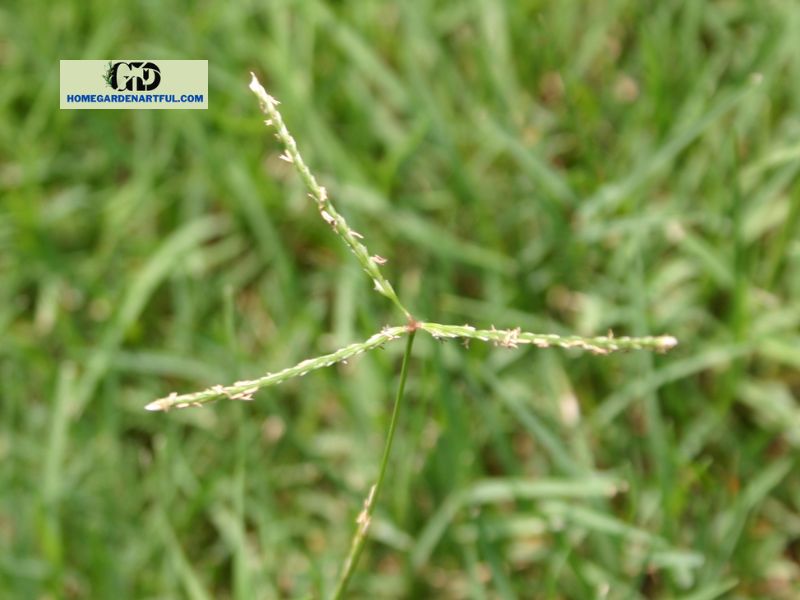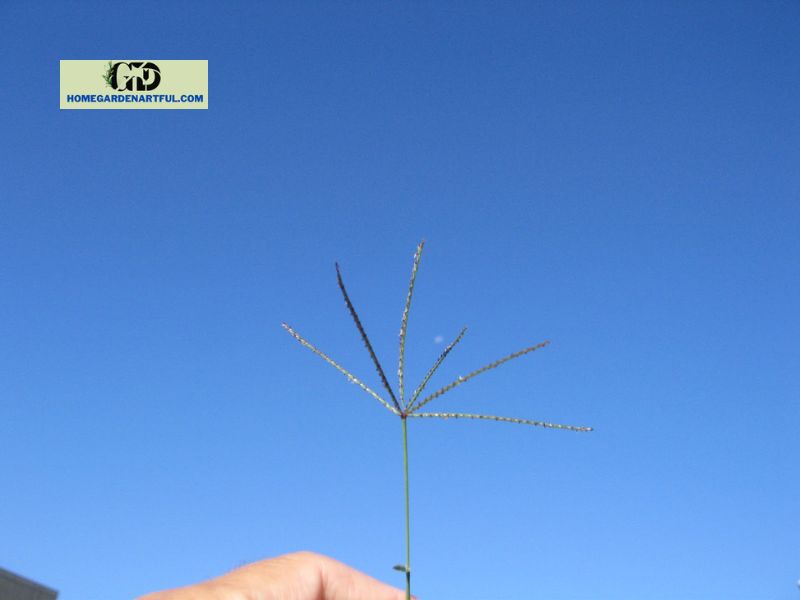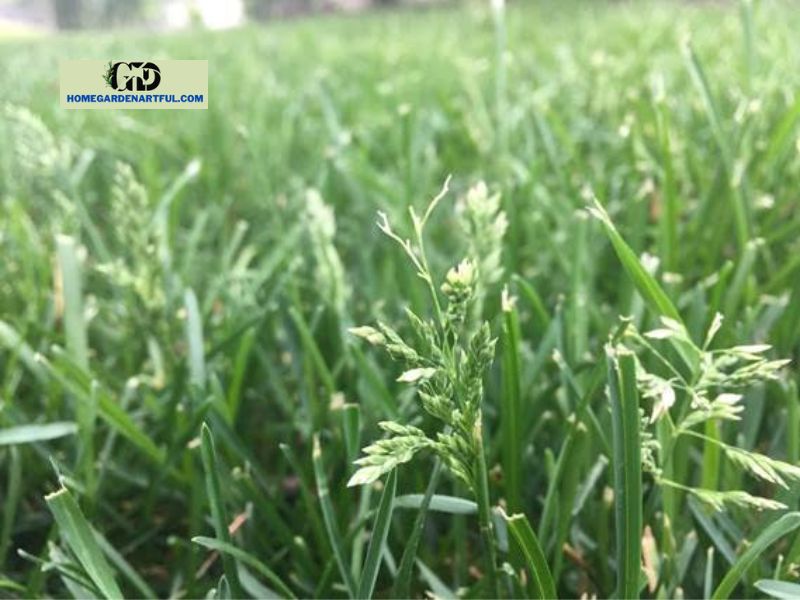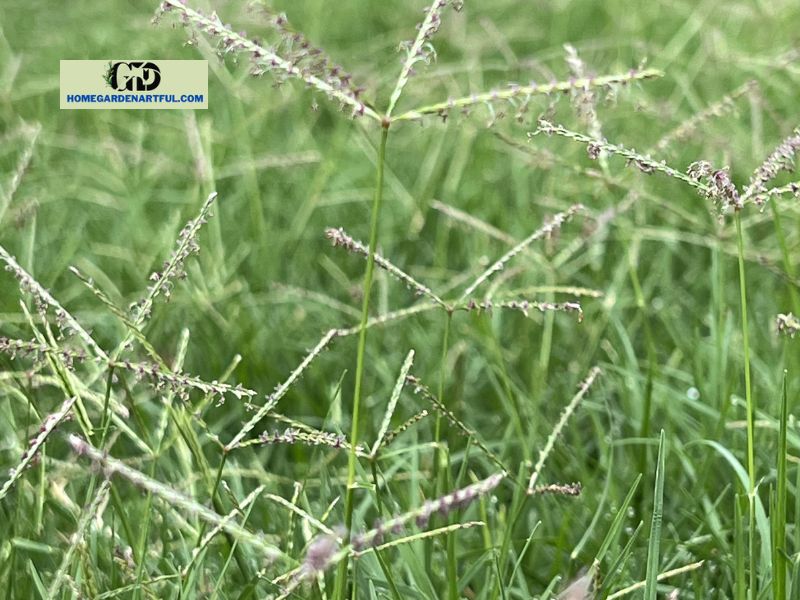What should you do with Bermuda Seed Head? When many lawn enthusiasts as well as property owners discover seed heads growing from their Bermuda grass, they may be perplexed or concerned.
Although these seed heads are a natural component of the grass’s life cycle, they can temporarily change the texture and appearance of a lawn, causing some to misinterpret them as symptoms of weed infestation or poor lawn health. Discover at homegardenartful.com!
Brief Introduction to Bermuda Grass

Bermuda grass, also known scientifically as Cynodon dactylon, is a common turfgrass species native to Africa.
Because of its endurance and versatility, it has been widely employed in diverse places around the world, particularly in hotter temperatures.
This grass type is recognized for its deep root system and ability to resist heat, drought, and heavy foot traffic, making it a popular choice for golf courses, lawns, and sports fields. Its delicate texture and quick development add to its visual attractiveness and functional utility.
Bermuda grass is a perennial warm-season grass, which means it grows during the summer and goes dormant during the winter.
This species grows in a creeping manner, which allows it to recover fast from damage or wear. Bermuda grass, when properly cared for and maintained, may offer a lush and durable surface that remains healthy and appealing during the growing season.
Bermuda Seed Head

One prevalent misperception about Bermuda grass is that the presence of seed heads indicates the presence of weeds or poor lawn health.
In truth, seed heads are a normal element of the grass’s life cycle as well as should not be interpreted as an indication of a sick lawn. As the plant matures and prepares to reproduce, seed heads appear, which is a natural occurrence for any grass species.
While seed heads may momentarily affect the texture as well as the appearance of your grass, they do not always jeopardize its health or functionality.
Understanding this distinction is critical for appropriate lawn management because it prevents you from taking needless or counterproductive steps to deal with the presence of seed heads.
Why do I get seed heads on my Bermuda Grass?

Bermuda grass seed heads develop in response to a variety of circumstances, including environmental conditions, nutrition availability, and mowing patterns.
Seed heads frequently appear during times of environmental stress, like drought or extreme heat. In such conditions, the grass devotes more energy to reproductive growth in order to secure the species’ survival and propagation.
Nutrient availability, particularly nitrogen levels, can also have an impact on seed head formation. Due to a lack of nitrogen in the soil, the grass may focus on reproductive growth rather than vegetative growth, resulting in a larger incidence of seed heads.
Mowing methods, particularly mowing height and frequency, can also contribute to the production of seed heads. Bermuda grass may respond by producing additional seed heads as a survival mechanism if it is mowed too low or rarely.
What Should You Do If You Notice Bermuda Seed Head?
When seed heads grow on your Bermuda grass, it is critical to maintain correct lawn care techniques in order to ensure general health and limit the influence of seed heads on the appearance of the lawn. Regular mowing is essential for removing seed heads and maintaining a uniform lawn height.
Bermuda grass should ideally be mowed at a height of 1 to 1.5 inches and as frequently as possible to avoid removing more than one-third of the grass blade at a time.
Watering is also essential for a healthy Bermuda grass lawn. Ensure that the lawn receives 1 to 1.5 inches of water per week, either from rainfall or from extra irrigation.
Water deeply and rarely to promote a strong root system and limit the possibility of seed head production owing to drought stress.
Fertilization is also important for the health of Bermuda grass. To promote strong growth while minimizing seed head production, use a balanced fertilizer with an optimum nitrogen-to-phosphorus-to-potassium ratio.
Conduct a soil test to identify your lawn’s exact nutritional requirements, and then apply fertilizer accordingly.
Final Thoughts
Bermuda grass seed heads are a normal part of the plant’s life cycle as well as should not be confused with weeds or poor lawn health. Environmental stress, nutrition availability, and mowing methods are all elements that can influence the development of seed heads.
When seed heads sprout, it is critical to follow correct lawn care techniques such as frequent mowing, enough watering, and balanced fertilizing.
These steps will aid in the promotion of a lush, healthy, and visually pleasing lawn while reducing the influence of seed heads on the texture and appearance of the lawn.
Remember that Bermuda grass is a tough and adaptable plant that can thrive in a variety of environments. Your Bermuda grass lawn will keep on providing an attractive and usable surface for years to come with proper care and attention.
So, the next time you notice seed heads on your Bermuda grass, don’t panic. Continue your regular lawn care regimen instead, and enjoy the beauty as well as endurance of this outstanding turfgrass type.


